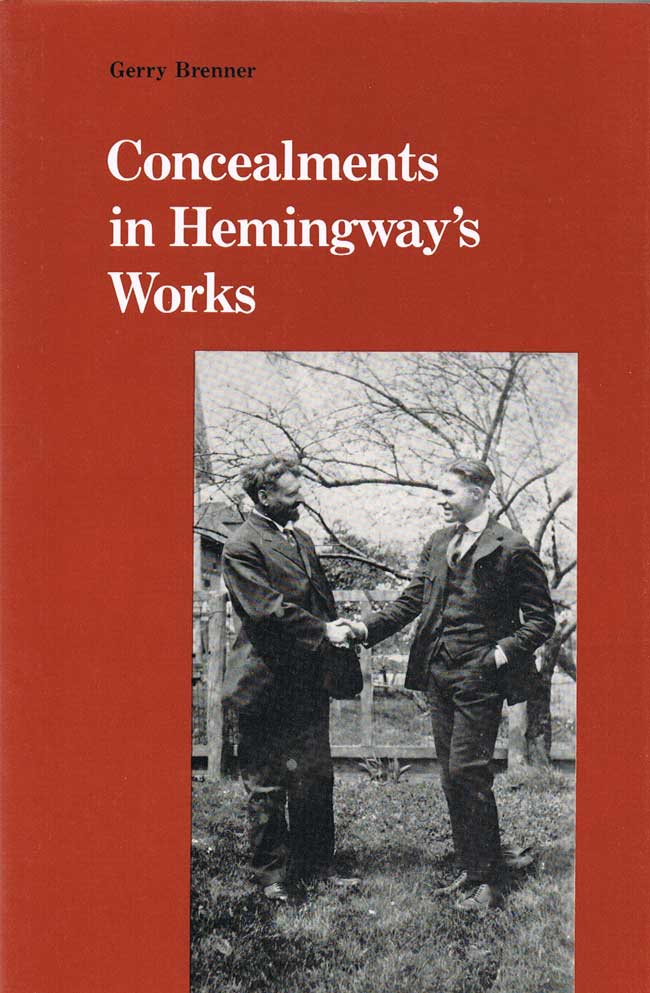Concealments in Hemingway’s WorksGerry Brenner |
 Jan 1983 Literary criticism/American 279 pp. 6x9 | |||
|
read the full text of the book • |
Like any writer who continues to engage our interest, compel our attention, and challenge our understanding, Ernest Hemingway was simultaneously blessed and cursed throughout his life by an obsession. It is Professor Brenner’s opinion that that obsession—Hemingway’s relationship with the chief emotional object of his life, his father —empowered all of his writing, and that exploring it uncovers previously unseen complexities in both the man and his work. Using the methods of New Criticism, generic criticism, classical Freudian theory, and psychobiography, Dr. Brenner extracts from Hemingway’s deceptively “artless” workds their dynamic but hidden aims. When viewed from these combined critical perspectives, the justly acclaimed novels, the troublesome nonfiction, and even stories dismissed as mediocre take on dimensions of meaning and significance that have previously gone undetected. Professor Brenner’s revisionary reading divides Hemingway’s mature writings into five phases in order to trace Hemingway’s obsession and two related ideas: that until his last phase, Hemingway’s novels and books of nonfiction were experimental—an intention he tried rigorously to conceal—and that his aesthetic aim, during all phases of his career, was to conceal his art and his cunning as an artist. To the first phase, which he terms the Thesis Phase, Brenner assigns A Farewell to Arms and The Sun Also Rises; to the second, the Aesthetic Phase, the nonfictional Death in the Afternoon and Green Hills of Africa. The third or Aristotelean Phase contains To Have and Have Not and For Whom the Bell Tolls, conscious attempts to write, first, a classical tragedy and, second, a classical epic. Across the River and into the Trees belongs to the Imitative Phase, Dante’s Divine Comedy being Hemingway’s deliberate, concealed model. The fifth and final phase—the Antithetical—produced the rich but deeply flawed The Old Man and the Sea, Islands in the Stream, The Dangerous Summer, and A Moveable Feast. The writer who emerges in Professor Brenner’s incisive analysis is the same Hemingway characterized by his biographer, Carlos Bakers, as “a man of many contradictions.” A masculine swagger and much publicized sexuality mask a latent homoeroticism. The flamboyant exhibitionism of “Papa Sportif” hides the self-disciplined, solitary, and secretive craftsman. But beyond these contrarieties of public persona and private self, Brenner finds an artist who early in his career formed the habit of concealing the techniques, models, and sources for his work—the habit that later on, in the middle of his career, led him to conceal as well the literary formulas he used. This cunning, craftiness, duplicity, and deviousness become, in Professor Brenner’s view, crucial, even necessary, but until now ignored ingredients in our understanding of Hemingway’s artistry and his obsession with his father—the figure whose inspiriting, tormenting, and unremitting influence was the primary source of his son’s aims and ambivalences, anxieties, and desires: the figure whose presence, company, certification, belief, and “patient approving witness” Hemingway sought through all of his life, and the figure to whom the voice in his writing continuously spoke. Gerry Brenner is professor of English at the University of Montana. | |||

